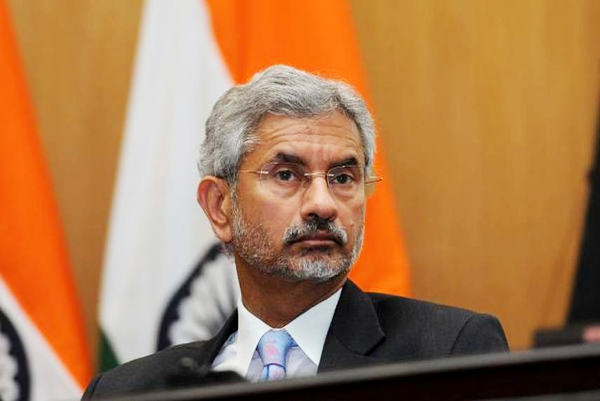Among the changes introduced by the recent cabinet expansion of the Narendra Modi government, the induction of two new ministers of state to join the ministry of external affairs (MEA) is noteworthy. With the entry of Meenakshi Lekhi and Rajkumar Ranjan Singh, the MEA now has a record total of four ministers catering to India’s foreign relations. To put this in perspective, only the ministries of home affairs, education and social justice have a similar posse of four ministers each.
Four ministers manning ‘Team MEA’ is a historic development. It is a clear demonstration of the high priority that Prime Minister Modi accords foreign policy and international engagement. Given the vast domestic governance demands on Modi, the extraordinary time and energy he himself has devoted to elevating India’s international status through foreign visits, summit meetings and overall guidance of the MEA, speak volumes about his global vision.
If Modi has been India’s most visible diplomat-in-chief on the world stage, ensuring that his second-in-command, S. Jaishankar, who heads the MEA, has the requisite bench strength of deputies is a signal that India intends to ramp up its international profile.
In India’s competitive governmental environment, where ministries and bureaucracies vie for their due shares of attention and finances, the wisdom of committing more resources to external affairs is often under-appreciated. Un- informed opinions about the costs of foreign policy and a failure to grasp the benefits that accrue from investing in external relations had in the past held back the rise of our country. Modi, thankfully, has better explained the link between domestic and foreign interests and convinced India’s public about the utility of external commitments. He is moving the needle in the right direction.
More hands on the deck at the ministerial level will enable India to show a high-level presence in key parts of the world on a sustained basis. In diplomacy, partner nations respect a country when its interlocutors are of a certain standing in protocol and hierarchy. A minister is a political pick and ranks above bureaucrats in the pecking order. With four MEA ministers to go around, not to mention Modi, the President and the Vice-President of India, who also undertake foreign visits, the ambit of VIP coverage for Indian diplomacy has been boosted. Countries which used to fret about India’s neglect or apathy would welcome Jaishankar or one his three deputies as they fan out.
Apart from intensively engaging with foreign counterparts through outbound travel or hosting incoming dignitaries in India, four ministers in the MEA also endows it with political firepower to deliver keynote speeches and rebuttals in a variety of multilateral settings. Due to the paucity of political emissaries of a certain stature, India often has to make do with representation by bureaucrats from the MEA and other relevant ministries in gatherings of the United Nations’ agencies, the World Trade Organization, the G20, and several regional and sub-regional groupings. While bureaucrats do the essential nitty-gritty work of hashing out agreements, drafting joint statements and attending routine meetings, there is no better way to emphasize India’s international leadership than to have a minister at a marquee podium speak about politically-sensitive issues pertaining to India’s sovereignty and image. Imagine a fiery counter-attack by a quality orator like Lekhi to Pakistan’s accusations on Kashmir on the floor of the UN or India’s Parliament, or in some televised debate watched by millions. Think of an elegant defence of India’s robust democracy at the World Economic Forum in Davos by Jaishankar, who could be substituted by his three deputies at simultaneous events elsewhere. The symbolic multiplier effects of four ministers cannot be underestimated. India will come across globally as prepared to lead on big issues.
Four ministers also carry the advantage of broader leadership oversight of our foreign policy towards particular regions and management of Indian projects abroad. Putting ministers in charge of key foreign initiatives with specific targets can help speed-up processes in critical areas like building plurilateral connectivity corridors and enhancing strategic coordination with partner countries through innovative ideas.
Ministerial expansion, of course, is only one way to beef up the MEA. Its annual budget, especially for foreign assistance, needs an upward push. For 2021-22 , the MEA got barely 0.52% of the central government’s overall budget. The Parliamentary Standing Committee on External Affairs lamented that “the allocation is incommensurate and inadequate” for the “extent and magnitude of India’s diplomatic outreach and foreign policy objectives.”
The size of the of Indian Foreign Service (IFS) cadre must also be considerably enhanced. Short-term contractual appointments of experts under ministers or in affiliated think-tanks and educational institutions should also happen, so that India has sufficient personnel and supplementary diplomatic amplifiers to befit a ‘leading power’ in the world. Much work remains. The ministerial quadrumvirate at the MEA should augur further reforms, so that India could one day match China and the US in global presence and impact.
Source: LiveMint
You may also like
-
IAF Aircraft Set Course For Exercise Eastern Bridge VII At Oman
-
India-us Working Together In Areas Like Critical Minerals, Supply Chains And Advanced Technologies: Shri Piyush Goyal
-
Defence Secretary to co-chair 5th India-Philippines Joint Defence Cooperation Committee meeting in Manila
-
2nd India-Japan Finance Dialogue held in Tokyo on 6th September, 2024
-
Prime Minister, Shri Narendra Modi welcomes Crown Prince of Abu Dhabi
